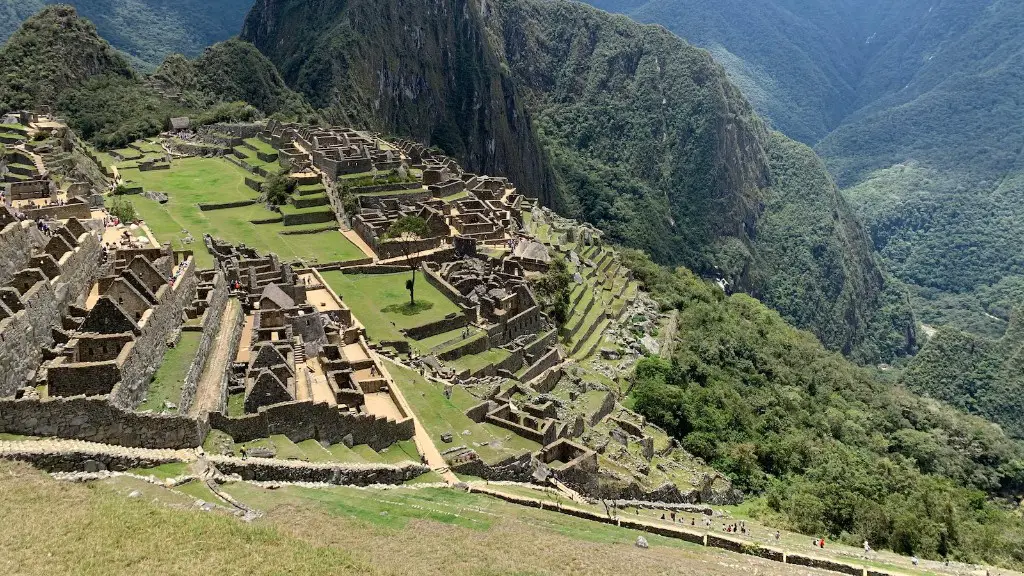History and Background
The Louvre Museum is one of the world’s largest and most visited art museums. Located in the heart of Paris, the museum is known for its extensive collection of artwork that dates back to the medieval period. Founded in 1793, the Louvre has become a symbol of French culture and is a must-visit attraction for any traveler. The collection was originally based on the royal collections, before the French Revolution, but has expanded significantly throughout the centuries. Today, the Louvre houses an array of artwork from some of the most famous and influential painters, sculptors, and other artists.
Location and Design
The Louvre Museum is situated in the centre of Paris, on the Right Bank of the Seine. The iconic building is made up of a 12th-century palace surrounded by modern wings from architectural renovations that began in the 1980s. It covers a vast space, spanning 33, 060 square meters of exhibition galleries. The design of the Louvre reflects its long history, with each wing having its own unique energy.
Collections and Exhibitions
The Louvre houses more than 410,000 objects and 35,000 works of art. These are divided into eight departments:Drawings, Paintings, Sculptures, Objets d’art, antiquities, Islamic Art, Prints and Photographs, and Decorative Arts. Some of the museum’s most famous attractions include the Mona Lisa, the Venus de Milo, and the Winged Victory of Samothrace.
Besides its vast collection of art, the Louvre also offers several permanent and temporary exhibitions and events. These range from lectures and tours to workshops, musical performances, and educational activities. In addition to the permanent exhibitions, the museum regularly hosts travelling exhibitions from all over the world.
Reinstatement of the Louvre
After the French Revolution, the Louvre started to become a museum in the 19th century, under the guidance of Napoleon Bonaparte. The first director of the museum, the Comte de Forbin, took the Louvre from its previous role as a palace and created a national museum dedicated to the arts. The Louvre was thoroughly renovated to reflect the new aesthetic of French art, while also displaying works from all across Europe.
In the twentieth century, the Louvre underwent yet another transformation under the leadership of the Louvre’s director Henri Lefebvre. He highlighted the importance of conservation and education, and instituted new practices to protect the Louvre’s priceless works of art. Under his guidance, the Louvre also embraced new forms of art, showcasing works of modern art and design.
Visitor Experience
The experience of visiting the Louvre is something special. The museum provides nearly endless opportunities for exploration and discovery. Visitors can wander through the galleries and learn about the history and culture of each artwork. They can also take advantage of the audio-guides, lectures and tours that the museum provides. These guide visitors through the history and art of the Louvre, and often provide additional insight from the curators’ and conservators’ perspectives.
Participation and Outreach
The Louvre is very active in reaching out to the wider community. The museum provides an array of educational resources for teachers, students, and the general public. This includes having educational programs for different age groups, research papers, and video tours. The Louvre also partners with universities and other institutions to foster academic research and scholarly exchanges.
In addition, the Louvre also engages in art-based initiatives across the world. This includes hosting various cultural and artistic events, as well as sponsoring exhibitions and festivals in other countries. Through such initiatives, the Louvre is able to share its vast collection and rich culture with others.
Innovations and Digitality
In recent years, the Louvre has undergone a digital transformation as part of its mission to make art accessible to everyone. The museum has implemented new technologies to enhance the visitor experience and provide access to its collections. This includes providing audio-guides, virtual tours and experiences, and augmented-reality exhibitions. The Louvre also provides a variety of apps and online resources to help visitors plan their visits and understand the works of art.
Cultural Impact
The Louvre is one of the most renowned institutions in the world, not just for its vast collection but also for its influence. The museum has allowed countless people to experience and appreciate the beauty of art. It has also been a beacon of light for many, supporting a culture of diversity and tolerance. To this day, the Louvre remains a leading cultural center for not only French history and culture, but for the world.
Contemporary Projects
The Louvre is always looking to the future and is constantly innovating. The museum is currently in the process of expanding its exhibition space. This includes a new wing dedicated to Islamic and Arab art, as well as two new galleries that will showcase digital and modern art. The Louvre also works with a range of artists, from painters and sculptors to photographers and filmmakers, to produce cutting-edge installations.
Environmental Impact
As the largest museum in the world and the center of French culture, the Louvre is a major contributor to the environment. The museum works hard to minimize its ecological footprint, not only through energy-efficient and renewable energy sources, but also through initiatives such as waste-reduction and water-saving programs. The Louvre is also looking to the future and is exploring ways to reduce its carbon footprint further, such as using electric vehicles and investing in green technologies.
Scholarly Research
As the Louvre’s collection and exhibitions grow, so too does the amount of scholarly research the museum is producing. The Louvre works in partnership with universities and other institutions to help promote the study of art and culture. This includes sponsoring lectures, conferences and other cultural activities, as well as providing grants for undergrad and postgrad students. The museum also hosts an annual International Conference of Research and Museum Studies, where scholars from all over the world can exchange ideas and knowledge.
Current Challenges Facing the Louvre
The Louvre faces a number of challenges in the current climate. These include conserving its artwork, adapting to changing markets, and responding to climate change. The museum is taking various steps to address these issues, such as investing in renewable energy sources and exploring new technologies. The Louvre is also working with other organizations to develop new ways of exhibiting art and engaging with the public.
Conclusion
The Louvre Museum is an institution with a rich history and great influence in the cultural world. From its extensive collections to its various exhibitions and events, the museum is alive with activity and filled with wonders. With each renewal and renovation, the Louvre continues to reinvent itself and provide a space for people from all walks of life to experience and appreciate the beauty of art.

